The reason for coming to the city of Bergama is to visit the Pergamon Acropolis,an ancient Greek city ruins.
There are several ways to get to Pergamon Acropolis, but we took the cheapest way – walking up.
Here are some tips on how to get to Pergamon Acropolis on foot and the sights to see.
- About Pergamon Acropolis
- Getting to Pergamon Acropolis from Bergama
- Walking up from Bergama
- Eumenes Gate and Agora (market)
- Gymnasium
- The sanctuary of Demeter
- The Sanctuary of Hera
- Building Z
- Theatre
- Temple of Dionysos
- The sanctuary of Athena
- Pergamon Altar (Pergamon Temple)
- Sanctuary of Trajan (Traianeum)
- How long does it take to visit the Pergamon Acropolis?
About Pergamon Acropolis

The Bergamon Acropolis is located on a hill northeast of Bergama town centre. It is visible from the town and is easily recognisable. The Bergamon Acropolis site has several attractions and is scattered across the 335 m high andesite hillside.
Pergamon was the capital of the Atalid kingdom from 281 BC to 133 BC and was an important cultural centre in Greek eara, but later became part of the Roman province of Asia.
How old is the city of Pergamon? Its settlement dates back to the late 8th century BC. Early Bronze Age occupation has not been proven, but Bronze Age stone tools have been found in the surrounding area.
Excavations are still ongoing at the Pergamon Acropolis site, but the remains are mainly Hellenistic architecture and structures with evidence of Roman use.
Pergamon was added to UNESCO’s World Heritage List in 2014.
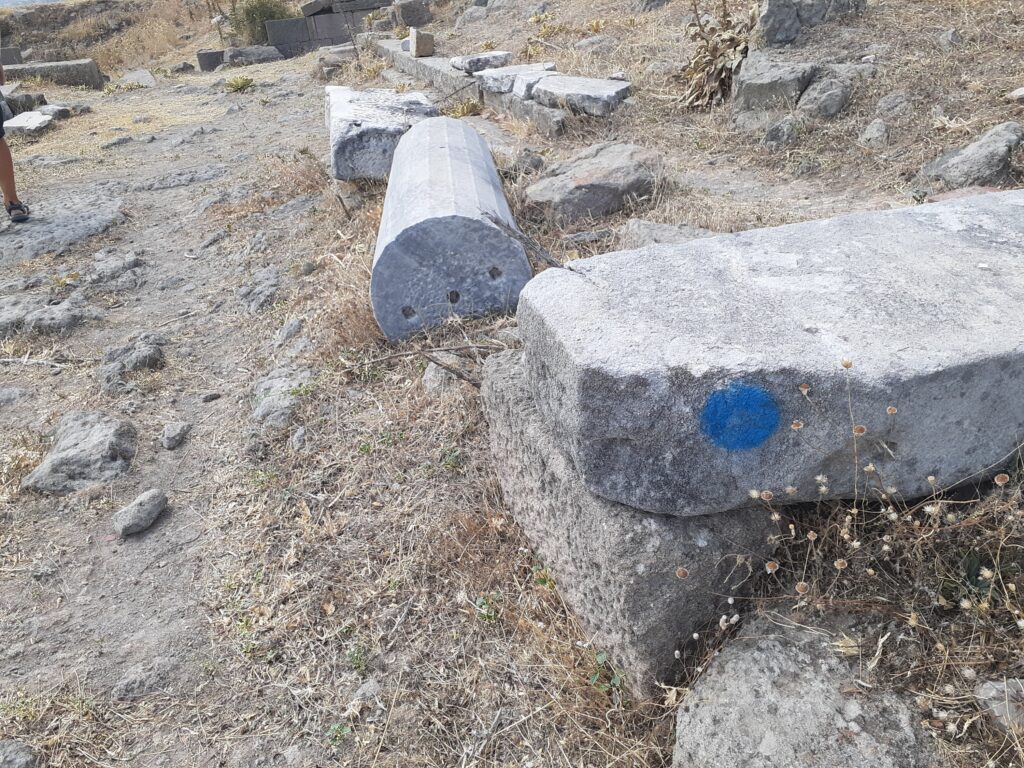
The ruins, which appear to be randomly placed and thousands of years old, are struck blue in places. These indicate recommended routes around the main structures. If you see these blue marks, it means that the site is a historical attraction of some kind. There are no other obvious routes around the site, so it is best to use this as a guide.
Please note that this is an open-air museum with little or no sun protection. Take sun protection.
Getting to Pergamon Acropolis from Bergama
You can access Pergamo Acropolis by car to the upper parking area, or by cable car to the top, or on foot.
Driving a car and parking or taking a cable car up to the top cost, but walking up is free. The walk up may seem daunting, as it looks to be quite high from the city below. But it is a path that people have gone up for more than 2,000 years. When we actually walked up, it wasn’t that hard as we could stop at the ruins on the way up and take our time while visiting.
Walking up from Bergama
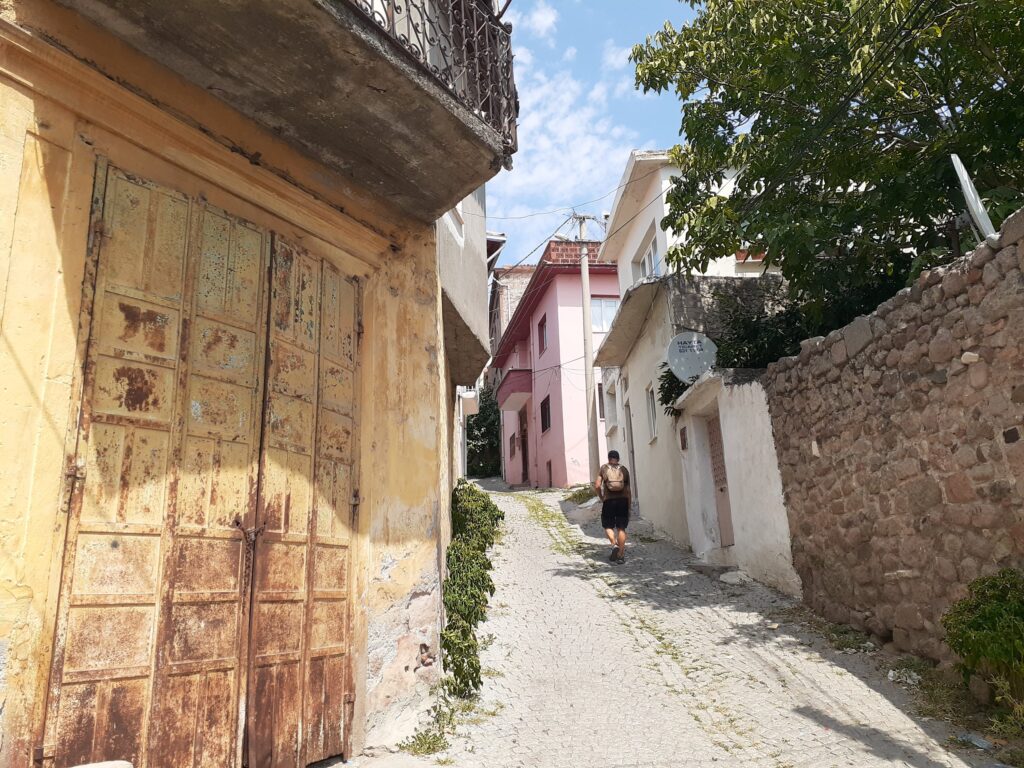
The road up to Pergamon Acropolis on foot is easily read on Google Maps or even better to use Mapsme. The road goes uphill from the town centre in a north-easterly direction. At first, the path winds its way up between houses on the slope, but after a while the houses disappear and you come to an unpaved road.
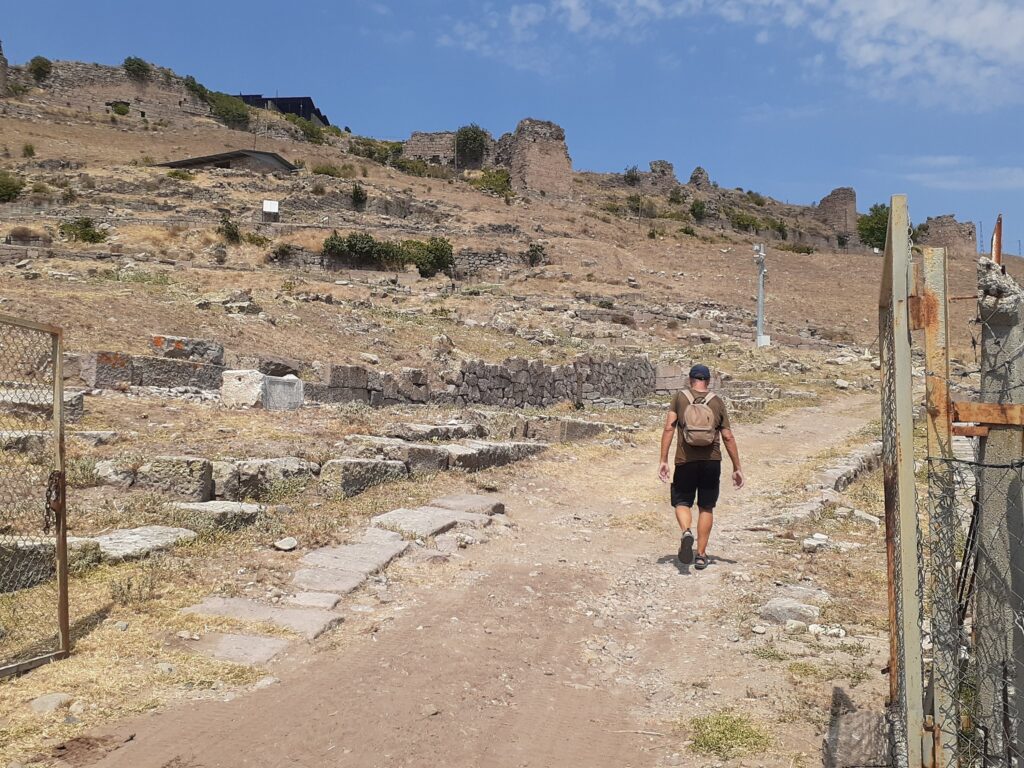
The entrance gate is close by when you see a group of ruins that are somewhat fenced off. When we passed through the gate, there was no one there and we were able to pass through smoothly.
Eumenes Gate and Agora (market)
As you enter the grounds of the Pergamon Acropolis like us, you will first see the ruins of Eumenes’ Gate and Market (Agora). These are a fortified gateway built during the reign of Eumenes II (197-159 BC) and a marketplace built in BC.
There was an explanatory sign nearby, but the text was faded and almost unreadable. Presumably, it is not well maintained, as tourists entering from the top of the hill rarely come this far…
Gymnasium
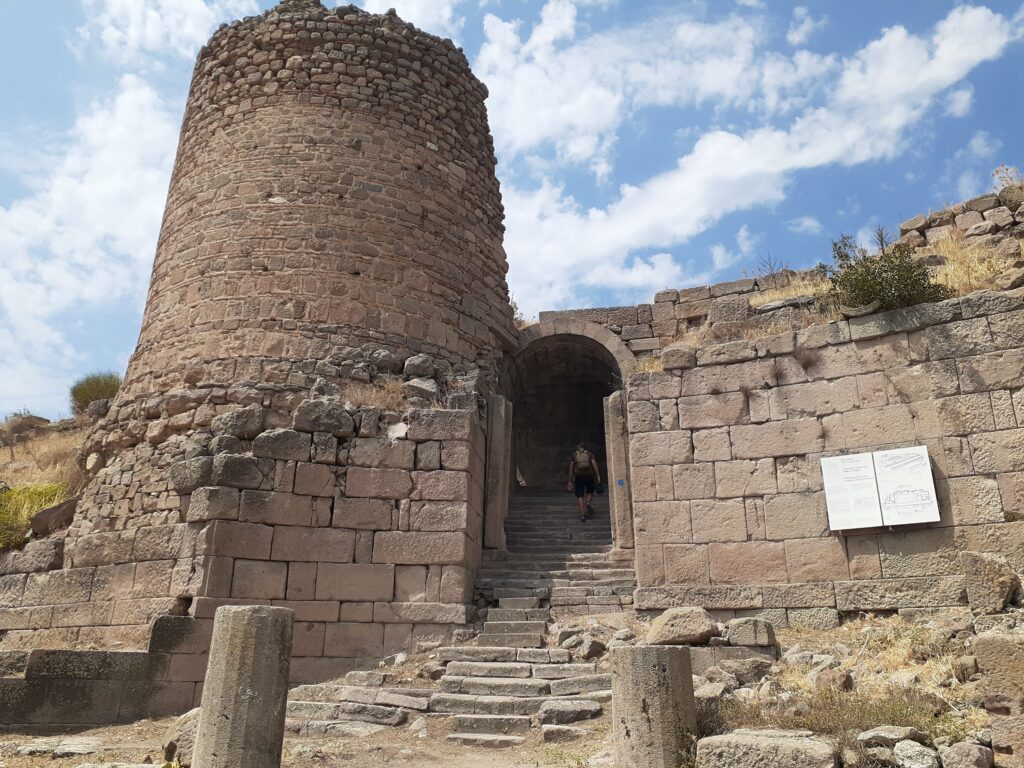
Don’t be disappointed as there is a site worth seeing just beyond, which is the gymnasium.
It was built in the reign of Eumenes II (197-160 BC) as a three-storey terrace gymnasium. It is the largest of the currently identified Hellenistic gymnasiums, excavated between 1901 and 1910 by W. Delpfeldt’s team.
It is easily recognisable because of the presence of a tower at the entrance.
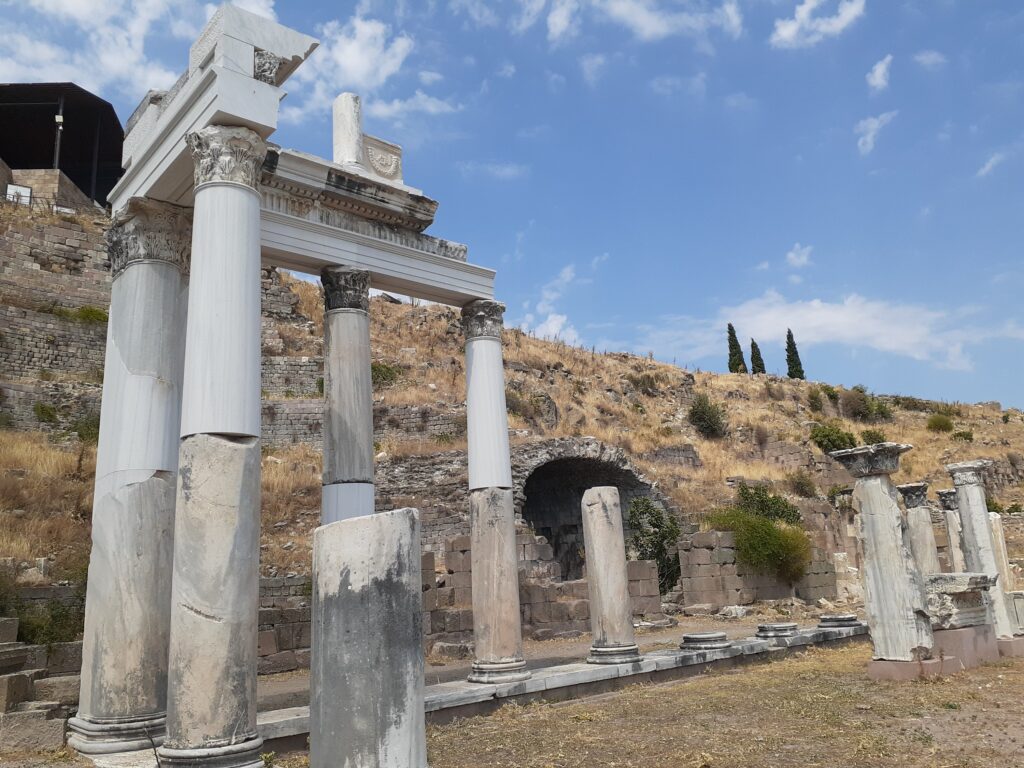
The lower gymnasium was used for children, the middle level for young people and the upper level for adult men, connected by a staircase with arches. There were baths on the east and west sides and a covered music hall called the ‘Odeion’, which was large enough to accommodate an audience of 1,000 people.
The gymnasium area could be viewed in its entirety from the Hera sanctuary above it, which again could amaze you by its size.
The sanctuary of Demeter
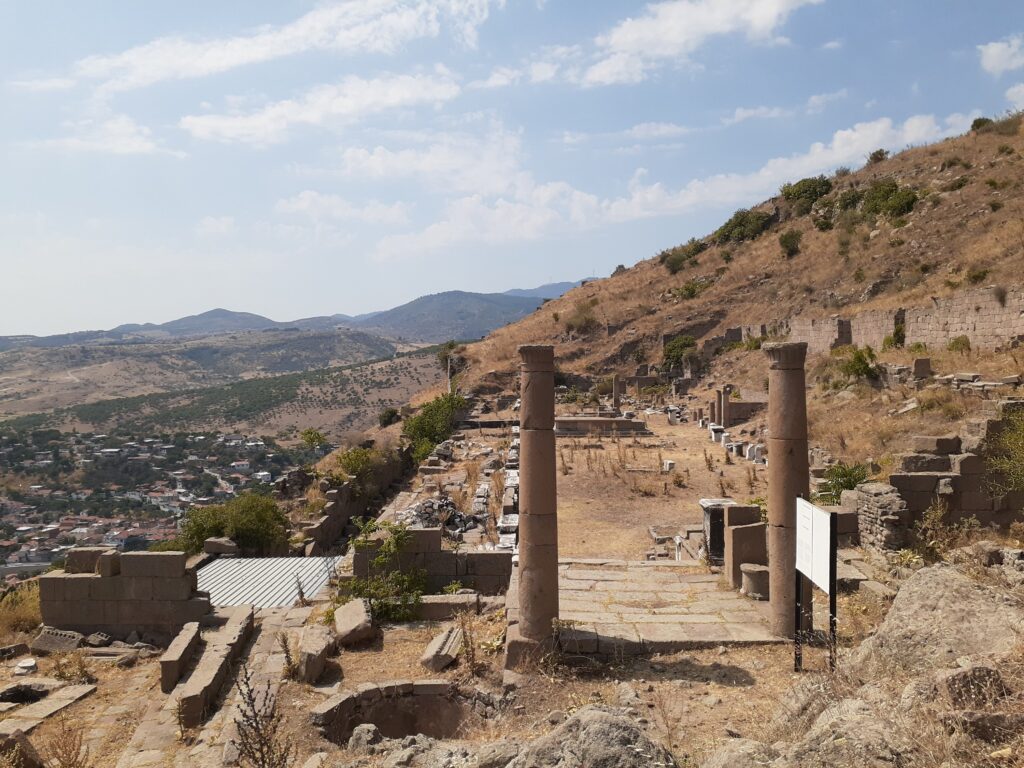
The sanctuary of Demeter is located to the left upside of the gymnasium. The sanctuary is quite old, dating back to the 4th century BC. There was a temple with a Corinthian porch from the time of Antoninus Pius and a Hellenistic temple built of local marble.
The Sanctuary of Hera

Above the gymnasium, to the right, was a temple dedicated to Hera (wife of Zeus). It was built by Attalos II (159-138 BC).
As mentioned earlier, the gymnasium area overlooked from here also has a spectacular view. Don’t forget to turn around and look down.
Building Z
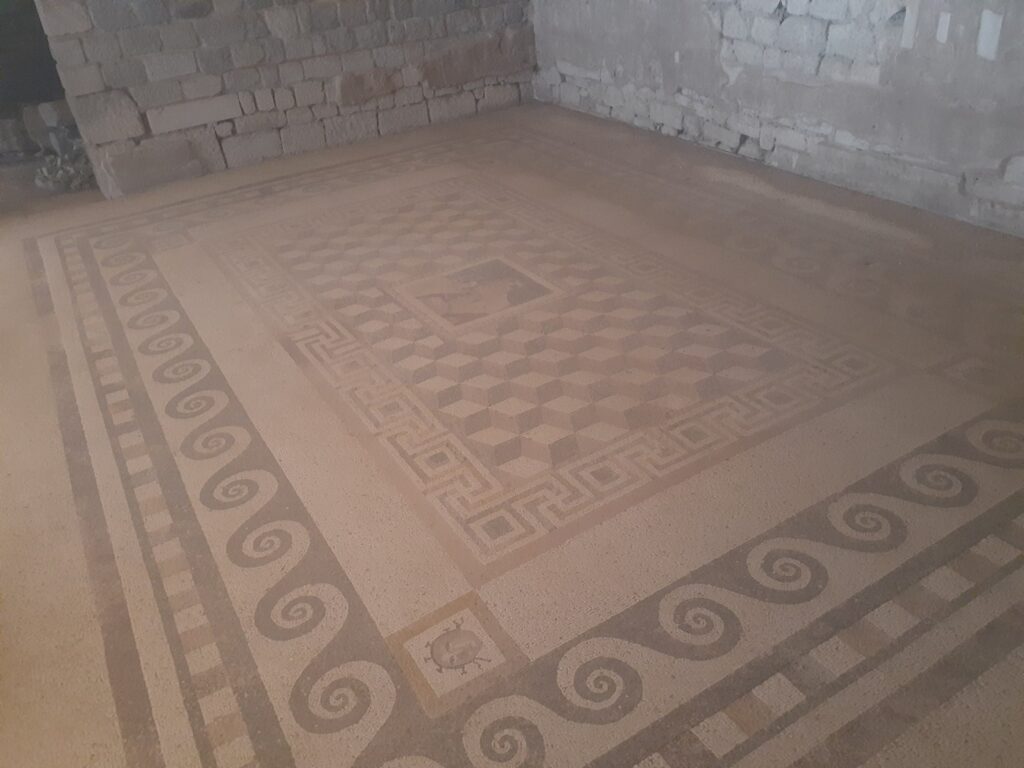
Between the sanctuary of Demeter and the sanctuary of Hera is a building known as Building Z, which can be entered via a staircase. The houses, among other things, an elaborate floor mosaic were discovered in 1990.
Theatre
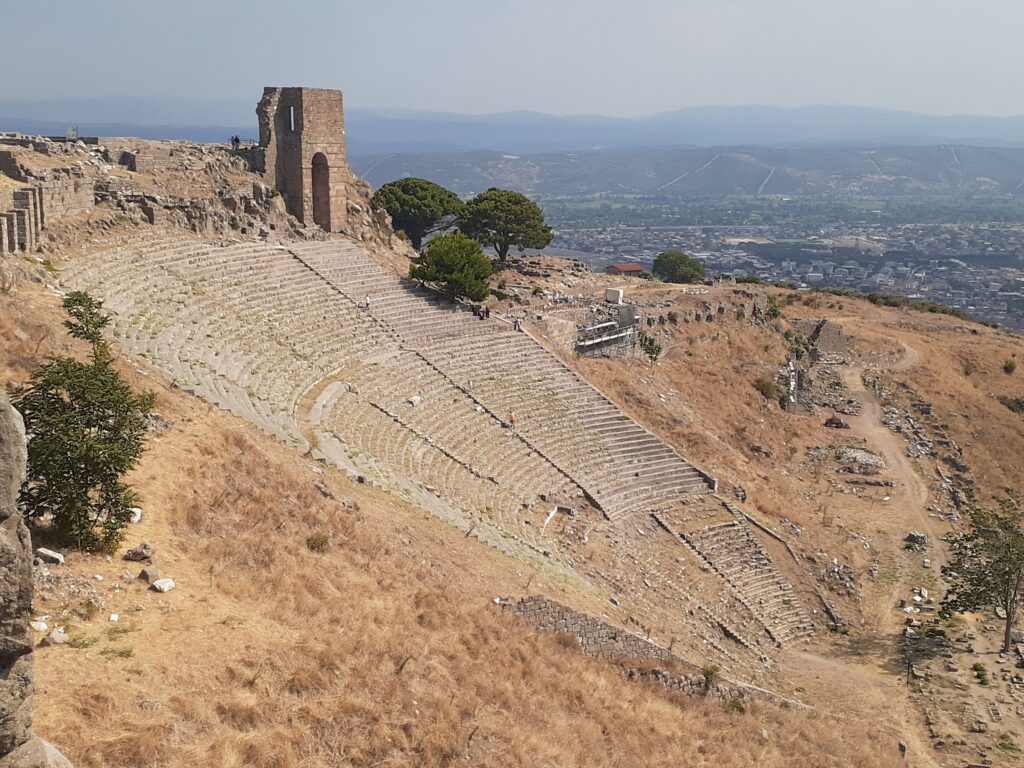
This theatre is known as the steepest ancient theatres with 36 m of height which had 78 rows of seats and could accommodate an audience of 10 000 people. As we entered from the lower level of the Acropolis and ascended to the top, we first looked up at the audience from the theatre stage side. If you are visiting the Acropolis from the top by car or cable car, you will be first looking down at the stage from the audience seats.
The stage part of the theatre is terraced and was framed by wooden beams set into a perforated stone foundation. At the northern end of the theatre terrace was the temple of Dionysos.
Standing at the top of the auditorium on the western slope of the acropolis, you might feel dizzy from the sheer steepness of the slope. This theatre is one of the most popular attractions on the Pergamon Acropolis.
Temple of Dionysos
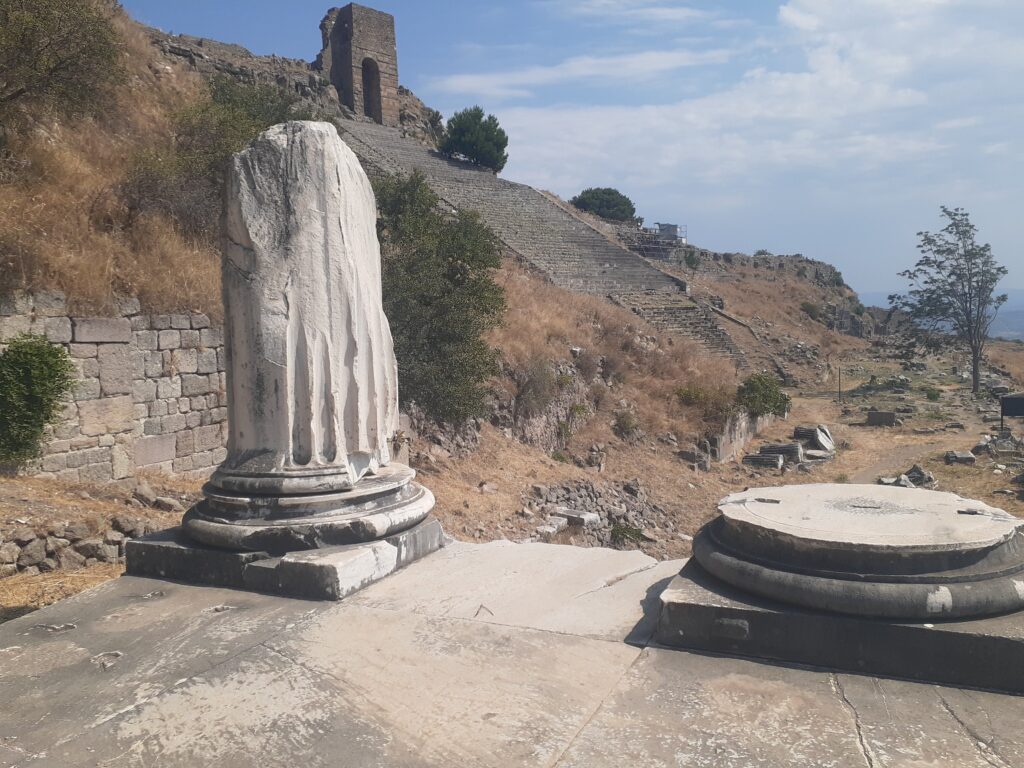
On the north side of the theatre’s stage terrace (to the right of the stage), there is a dynamic section with thick columns lying on a solid base. This was the Temple of Dionysos.
It is believed to have been built by Eumenes II in the 2nd century BC. It is estimated that the majority of the surviving structures were rebuilt during the reign of the emperor Caracalla or Hadrian.
Not only are the thick columns, but also their foundations and other architectural parts are all large masses, which gives an idea of how majestic the original temple must have been.
The sanctuary of Athena

The sanctuary of Athena, located at the top of the theatre seat, is the oldest temple in Pergamon and dates from the 4th century BC.
During the reign of Eumenes II (197-159 BC), a library was built on the northern side of the temple precinct. This was the second largest library in the ancient Greek world after the Library of Alexandria, and housed more than 200,000 volumes. However, it was stripped by Antonius in 41 BC and presented to Cleopatra.
Pergamon Altar (Pergamon Temple)
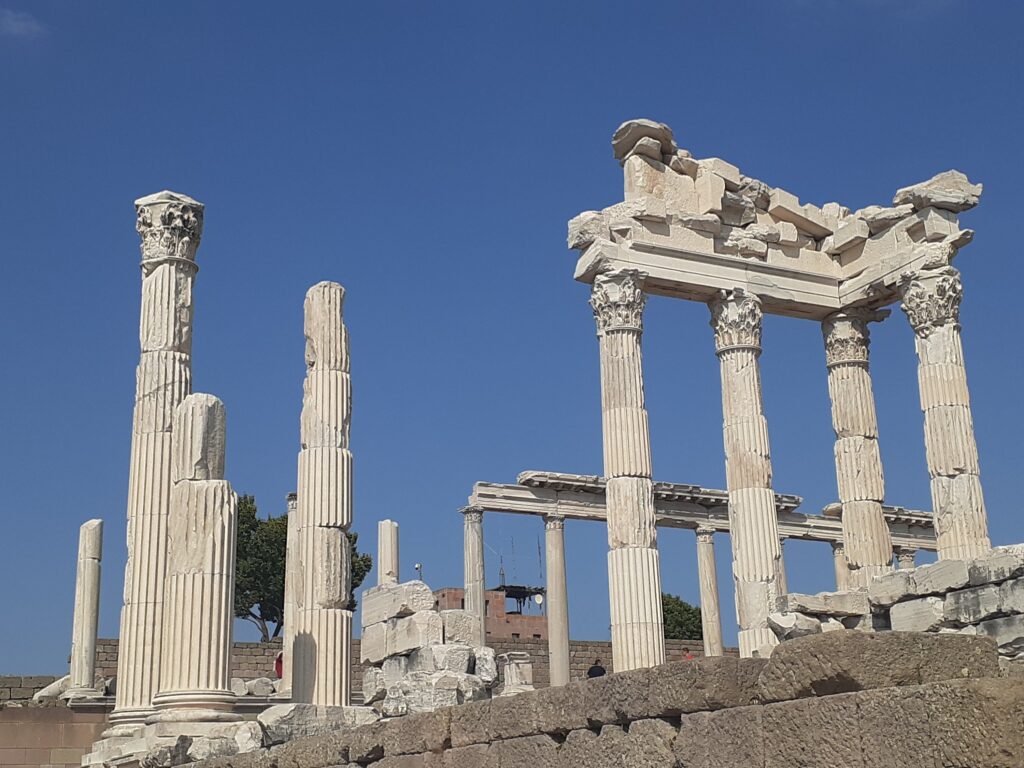
The most impressive structure on the Pergamon Acropolis site is the temple dedicated to Zeus and Athena. The exterior of the altar has reliefs depicting the battle between the Olympians and the Titans. At 2.3 m high and 113 m long, it was the second longest ancient relief after the Parthenon in Athens. It is now housed in the Pergamon Museum in Berlin, whilst the foundations of the altar remain here.
Artworks and votive offerings were displayed in the courtyard, and a statue of the Roman Emperor Augustus was placed on a central pedestal.
Sanctuary of Trajan (Traianeum)
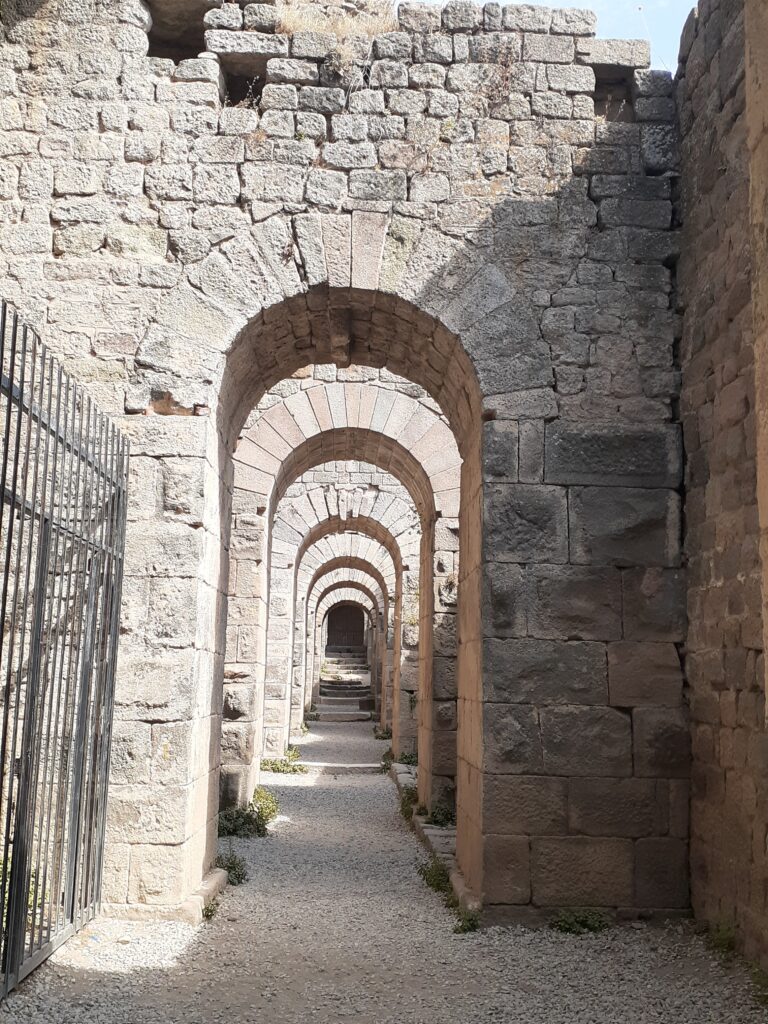
The temple on the top of the Pergamon Acropolis was not only a temple to Zeus, but also to the Emperor Trajan. An arched terrace remains below that temple.
The construction of the continuous arches was well maintained and it was easy to imagine what it must have looked like in those days.
How long does it take to visit the Pergamon Acropolis?
These are the highlights of our walking tour of the Pergamon Acropolis.
We walked slowly up from the town of Bergama, took photos as we went, and then walked back down the path we had walked up. The whole tour probably took about 4 hours.
If you go up by public transport and only see the main attractions, the Temple of Pergamon and the Theatre, it won’t take that long. But if you have come all the way to Bergama, you should take your time to walk around, imagining the ancient city of thousands years ago.

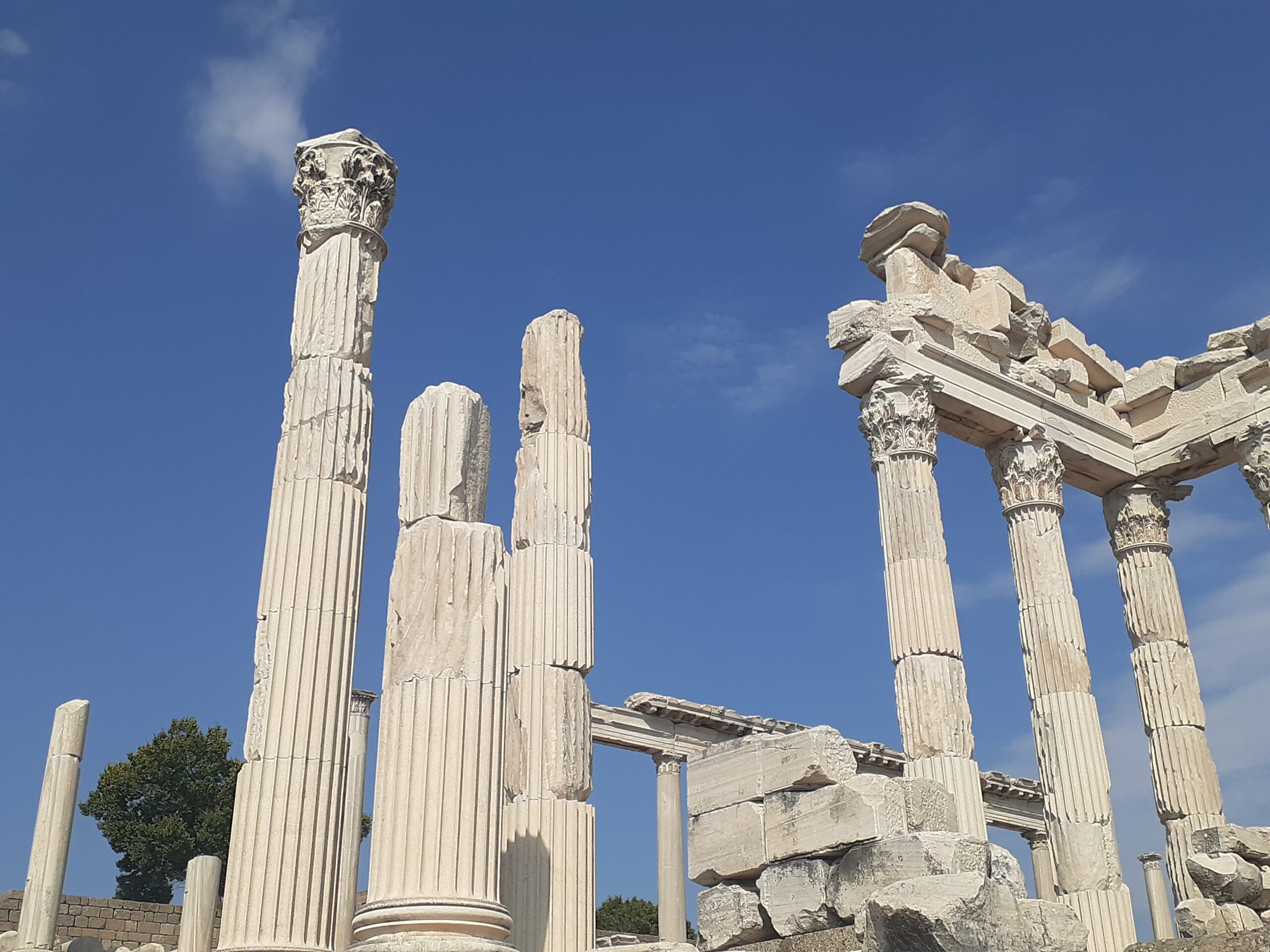


Comment